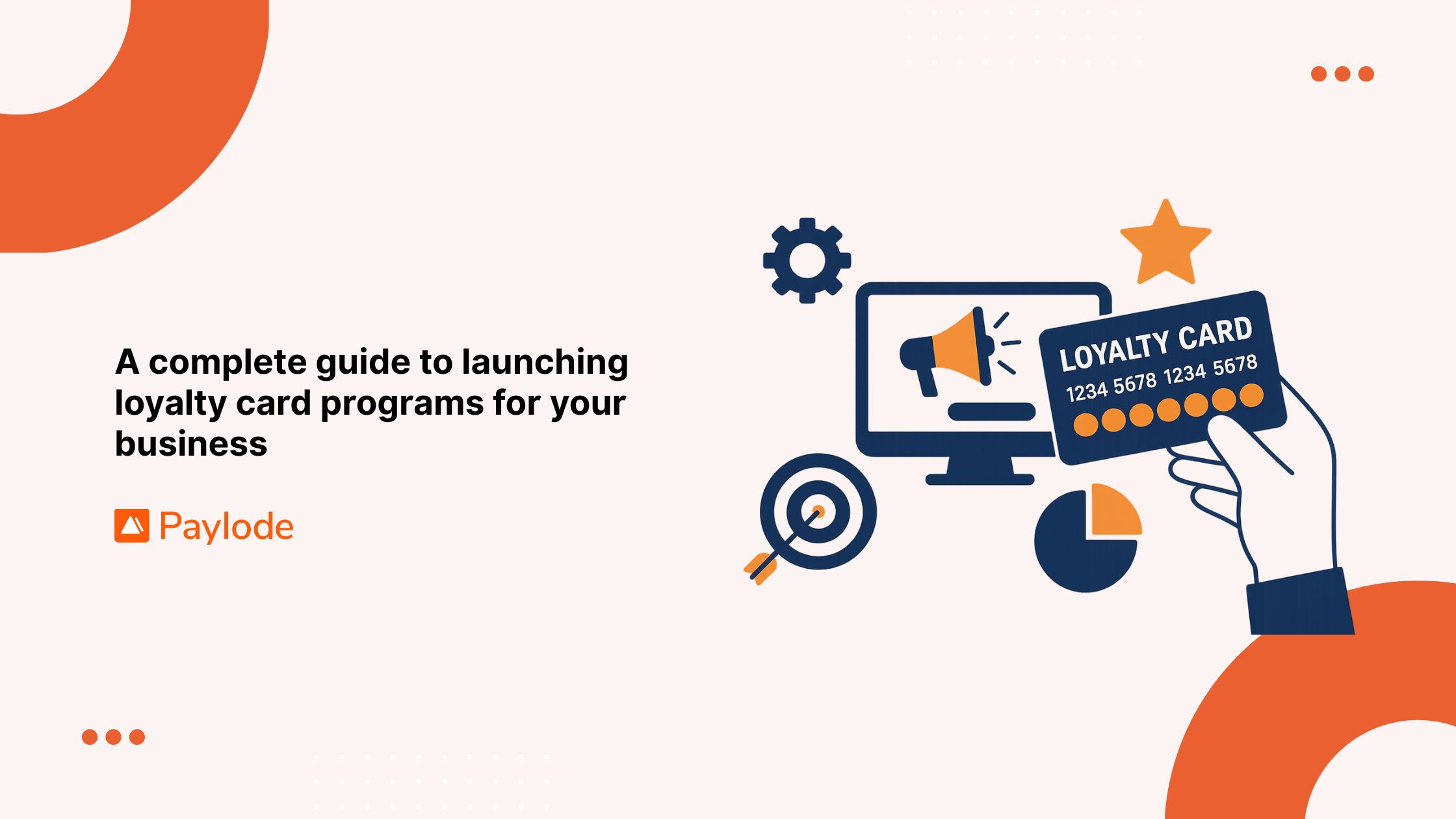In today's fiercely competitive market, understanding customer behavior is crucial for any business looking to enhance customer loyalty and retention. Data analytics offers businesses the tools and insights necessary to tailor loyalty programs effectively and improve customer retention rates. Through the strategic use of data, companies can gain a competitive edge by personalizing customer experiences and predicting future behaviors. This article explores how businesses can utilize data analytics within the Sample Pillar framework to achieve these goals.
Key Takeaways
- Understanding Customer Behavior: Data analytics provides deep insights into customer preferences, purchase patterns, and engagement levels.
- Tailoring Loyalty Programs: With the right data, businesses can create personalized and effective loyalty programs that resonate with individual customers.
- Improving Retention Rates: Data-driven strategies enable businesses to anticipate customer needs, address issues proactively, and enhance overall satisfaction to retain customers.
Understanding Customer Behavior Through Data Analytics
Collecting and integrating customer data
The first step in utilizing data analytics for understanding customer behavior is collecting relevant data. This includes:
- Purchase history: Detailed records of past purchases reveal buying patterns and preferences.
- Demographic information: Age, gender, location, and other demographic details help segment the customer base.
- Behavioral data: Website interactions, mobile app usage, and social media activity provide insights into customer engagement.
- Feedback and surveys: Direct feedback from customers through surveys, reviews, and support interactions offers qualitative insights.
Integrating this data from various sources into a centralized system is crucial for a comprehensive view of the customer. Businesses often use Customer Relationship Management (CRM) systems or specialized data analytics platforms to manage and analyze this data.
Analyzing customer data
Once the data is collected and integrated, the next step is analysis. Key analytical techniques include:
- Descriptive analytics: Summarizes historical data to understand past customer behaviors and trends.
- Predictive analytics: Uses statistical models and machine learning to forecast future customer behaviors and trends.
- Prescriptive analytics: Provides recommendations for actions based on predictive insights.
Gaining actionable insights
Through data analysis, businesses can uncover patterns and trends that offer actionable insights. For example:
- Identifying high-value customers who generate the most revenue.
- Understanding the factors that drive customer satisfaction and loyalty.
- Detecting early signs of customer churn to intervene proactively.
Tailoring loyalty programs using data
Personalized rewards and incentives
Data analytics allows businesses to create highly personalized loyalty programs. By understanding individual preferences and behaviors, companies can offer rewards and incentives that truly resonate with each customer. Personalization can include:
- Customized offers: Tailoring discounts and promotions to match the customer's purchasing habits and preferences.
- Exclusive access: Providing early access to new products or special events based on customer interests.
- Points-based systems: Designing point accumulation and redemption options that align with customer values and spending patterns.
Segmenting customers for targeted campaigns
Segmentation is a powerful tool for enhancing loyalty programs. By dividing customers into distinct groups based on specific criteria, businesses can:
- Create targeted marketing campaigns that address the unique needs of each segment.
- Develop loyalty tiers that offer different rewards and privileges to different customer segments.
- Measure the effectiveness of different loyalty strategies across various customer segments.
Dynamic program adjustments
Data analytics enables businesses to continuously monitor and adjust their loyalty programs. By tracking customer responses and engagement, companies can:
- Identify which aspects of the loyalty program are most effective.
- Make real-time adjustments to improve program effectiveness.
- Experiment with new rewards and incentives and measure their impact.
Improving customer retention rates with data analytics
Identifying at-risk customers
One of the key benefits of data analytics is its ability to identify customers who are at risk of churning. By analyzing factors such as:
- Decline in engagement: Reduced interactions with the business's website, app, or communications.
- Changes in purchase patterns: Decrease in the frequency or volume of purchases.
- Negative feedback: Increase in customer complaints or negative reviews.
Businesses can proactively reach out to at-risk customers with targeted retention strategies, such as personalized offers or improved customer service.
Enhancing customer experience
Data analytics provides insights into the factors that contribute to a positive customer experience. By understanding these factors, businesses can:
- Improve service quality: Identify areas where service can be enhanced based on customer feedback and behavior.
- Streamline processes: Use data to optimize processes that affect the customer experience, such as faster checkout times or efficient support systems.
- Personalize interactions: Tailor communications and interactions to individual customer preferences and behaviors, creating a more personalized experience.
Measuring and optimizing retention strategies
Continuous improvement is essential for effective customer retention. Data analytics allows businesses to:
- Measure retention rates: Monitor and analyze retention rates over time to assess the effectiveness of retention strategies.
- Identify successful tactics: Determine which retention efforts are most successful and scale them accordingly.
- Optimize efforts: Use data to refine and optimize retention strategies, ensuring they remain effective over time.
Case studies and examples
Example 1: Starbucks
Starbucks is renowned for its use of data analytics to enhance customer loyalty through its Starbucks Rewards program. By analyzing customer purchase patterns, preferences, and behaviors, Starbucks offers personalized rewards and promotions. The company's mobile app collects vast amounts of data, which it uses to tailor offers and recommendations that drive customer engagement and repeat business.
Example 2: Amazon
Amazon leverages data analytics to personalize the shopping experience, improving customer retention. The company's recommendation engine uses customer data to suggest products based on browsing history, purchase history, and other customers' behavior. Additionally, Amazon Prime, a loyalty program that offers benefits like free shipping and streaming services, is designed based on extensive data analysis to maximize customer satisfaction and retention.
Implementing data analytics in your business
Steps to get started
- Define objectives: Determine the specific goals you want to achieve with data analytics, such as improving customer loyalty or reducing churn rates.
- Collect data: Gather relevant customer data from various sources, ensuring it is accurate and comprehensive.
- Choose the right tools: Select data analytics tools and platforms that align with your business needs and objectives.
- Analyze data: Use analytical techniques to uncover insights and patterns in the data.
- Develop strategies: Create personalized loyalty programs and retention strategies based on your data insights.
- Implement and monitor: Roll out your strategies and continuously monitor their effectiveness, making adjustments as needed.
Challenges to consider
- Data privacy and security: Ensure that customer data is collected, stored, and used in compliance with relevant privacy laws and regulations.
- Data quality: Maintain high data quality by regularly cleaning and updating your data sets.
- Integration: Integrate data from various sources to create a comprehensive view of the customer.
- Complexity: Managing and analyzing large volumes of data can be complex and require specialized skills and technology.
FAQs about using data analytics for customer loyalty and retention
What types of data should businesses collect to understand customer behavior?
Businesses should collect purchase history, demographic information, behavioral data (such as website and app usage), and feedback from customers to gain a comprehensive understanding of customer behavior.
How can data analytics help in creating personalized loyalty programs?
Data analytics helps businesses understand individual customer preferences and behaviors, allowing them to create highly personalized rewards, offers, and incentives that resonate with each customer.
What are the key benefits of using data analytics for customer retention?
The key benefits include identifying at-risk customers, enhancing the customer experience, measuring and optimizing retention strategies, and ultimately improving overall customer satisfaction and retention rates.
What tools are commonly used for data analytics in customer loyalty and retention?
Common tools include Customer Relationship Management (CRM) systems, data visualization tools, machine learning platforms, and specialized data analytics software.
How can businesses ensure the privacy and security of customer data?
Businesses should implement robust data privacy policies, use encryption and secure data storage methods, and comply with relevant laws and regulations such as GDPR or CCPA to ensure the privacy and security of customer data.
Can small businesses benefit from data analytics for customer loyalty and retention?
Yes, small businesses can also benefit from data analytics by using affordable or free tools and focusing on key data points that are most relevant to their business objectives. Personalized customer experiences and targeted retention strategies can significantly impact customer loyalty and retention even for smaller enterprises.
By leveraging data analytics, businesses can unlock valuable insights into customer behavior, create personalized loyalty programs, and improve retention rates, ultimately driving long-term success and customer satisfaction.



